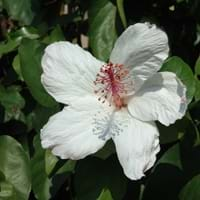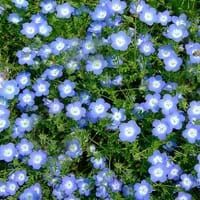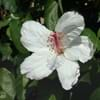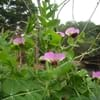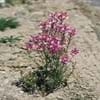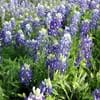Life Span
Annual and Perennial
Annual
Type
Broadleaf Evergreen
Flowering Plants, Herbs
Origin
North America, Mexico, Central America
Western United States, Alaska, California
Types
Not Available
Nemophila menziesii var. atomaria, Nemophila menziesii var. integrifolia, Nemophila menziesii var. menziesii
Number of Varieties
Not Available
Habitat
gardens, Grassland, Homesteads, Subtropical climates, tropical environments
Chaparral, Grassland
USDA Hardiness Zone
9-15
3-9
AHS Heat Zone
Not Available
Not Available
Sunset Zone
21,22
A1, A2, A3, H1, H2, 1a, 1b, 2a, 2b, 3a, 3b, 4, 5, 6, 7, 8, 9, 10, 11, 12, 13, 14, 15, 16, 17, 18, 19, 20, 21, 22, 23, 24
Habit
Oval or Rounded
Cushion/Mound-forming
Flower Color
Gold
White, Blue, Light Blue, Sky Blue
Flower Color Modifier
Bicolor
Bicolor
Fruit Color
Chocolate, Ivory, Black
Not Available
Leaf Color in Spring
Dark Green
Green
Leaf Color in Summer
Dark Green
Green
Leaf Color in Fall
Dark Green
Not Available
Leaf Color in Winter
Dark Green
Light Green
Plant Season
Spring, Summer, Fall, Winter
Spring, Summer, Winter
Sunlight
Full Sun, Partial Sun
Full Sun, Partial Sun
Growth Rate
Medium
Very Fast
Type of Soil
Loam
Loam, Sand
The pH of Soil
Neutral
Acidic, Neutral
Soil Drainage
Well drained
Well drained
Bloom Time
Early Summer, Summer, Late Summer, Early Fall, Fall, Indeterminate
Early Spring, Spring, Late Spring, Winter, Late Winter
Tolerances
Drought, Variety of soil types
Drought
Where to Plant?
Ground, Pot
Ground
How to Plant?
Stem Cutting, Tip cutting, Vegetative Reproduction
Seedlings
Plant Maintenance
Medium
Medium
Watering Requirements
It cannot sustain wet-feet, Keep the Soil well drained, Requires watering in the growing season, Water Deeply, Water frequently while growing, Water more in summer, Water when soil is dry
Do not water frequently, Never Over-water
In Summer
Lots of watering
Lots of watering
In Spring
Moderate
Moderate
In Winter
Average Water
Average Water
Soil pH
Neutral
Acidic, Neutral
Soil Type
Loam
Loam, Sand
Soil Drainage Capacity
Well drained
Well drained
Sun Exposure
Full Sun, Partial Sun
Full Sun, Partial Sun
Pruning
A hard prune may be necessary if the plant becomes woody, Cut leaves after fall, Cut or pinch the stems, Pinch or prune as they grow to promote branching and bushiness, Prune for shortening long shoots, Prune in early summer, Remove deadheads
Not Available
Fertilizers
Apply 10-10-10 amount, Balanced liquid fertilizer, Do not fertilize new plants until at least a month, Use a low phosphate fertilizer to improve the quality of the blooms
All-Purpose Liquid Fertilizer
Pests and Diseases
Aphids, Mealybugs, Red spider mite, Scale, Thripes, Whiteflies
Red blotch
Plant Tolerance
Drought, Variety of soil types
Drought
Flower Petal Number
Single
Single
Foliage Texture
Medium
Fine
Foliage Sheen
Glossy
Not Available
Attracts
Bees, Butterflies, Hummingbirds
Bees, Butterflies
Allergy
no allergic reactions
Not Available
Aesthetic Uses
Beautification, Borders, Landscape Designing
Beautification, Bouquets, Showy Purposes
Beauty Benefits
Hair Conditioner, Not Available, Prevents greying of hair, Prevents Premature Baldness, Promotes Healthy Hair, Promotes healthy skin, Speed hair growth
Not Available
Environmental Uses
Air purification
Air purification
Medicinal Uses
anti-inflammatory, Diuretic, Hair Loss, High blood pressure, Vitamin C
Pain killer
Part of Plant Used
Flowers, Leaf Stalks, Leaves
Flowers
Other Uses
Culinary use, Employed in herbal medicine, Jam, Jelly, Making Shampoo, Oil is used for aromatherapy, Oil is used in perfume, soaps, creams, etc., Showy Purposes, Traditional medicine, Use in Chinese herbology, Used As Food, Used as Ornamental plant, Used for bedding in gardens, Used for fragrance, Used for its medicinal properties, Used in making beverages, Used in paper industry, Used in salads, Used to make hair tonic
Not Available
Used As Indoor Plant
No
No
Used As Outdoor Plant
Yes
Yes
Garden Design
Container, Foundation, Houseplant, Mixed Border, Tropical
Bedding Plant, Container, Hanging Basket, Mixed Border, Wildflower
Botanical Name
Hibiscus arnottianus
NEMOPHILA menziesii
Common Name
White Hibiscus
Baby Blue Eyes
In Hindi
सफेद हिबिस्कुस
Baby Blue Eyes Plant
In German
Weiß Hibiscus
Baby Blue Eyes Pflanzen
In French
white Hibiscus
bébé yeux bleus usine
In Spanish
hibisco blanco
bebé ojos azules planta
In Greek
White Hibiscus
μωρό μπλε μάτια των φυτών
In Portuguese
Hibiscus branco
bebê olhos azuis planta
In Polish
Biały Hibiscus
dziecko niebieskie oczy roślin
In Latin
Hibiscus album
baby blue eyes plant
Phylum
Magnoliophyta
Not Available
Class
Magnoliopsida
Magnoliopsida
Order
Malvales
Not Available
Family
Malvaceae
Boraginaceae
Clade
Angiosperms, Eudicots, Rosids
Angiosperms, Asterids, Eudicots
Tribe
Hibisceae
Not Available
Subfamily
Malvoideae
Hydrophylloideae
Importance of White Hibiscus and Baby Blue Eyes Plant
Want to have the most appropriate plant for your garden? You might want to know the importance of White Hibiscus and Baby Blue Eyes Plant. Basically, these two plants vary in many aspects. Compare White Hibiscus and Baby Blue Eyes Plant as they differ in many characteristics such as their life, care, benefits, facts, etc. Every gardener must at least have the slightest clue about the plants he wants to plant in his garden. Compare their benefits, which differ in many ways like facts and uses. The medicinal use of White Hibiscus is anti-inflammatory, Diuretic, Hair Loss, High blood pressure and Vitamin C whereas of Baby Blue Eyes Plant is Pain killer. White Hibiscus has beauty benefits as follows: Hair Conditioner, Not Available, Prevents greying of hair, Prevents Premature Baldness, Promotes Healthy Hair, Promotes healthy skin and Speed hair growth while Baby Blue Eyes Plant has beauty benefits as follows: Hair Conditioner, Not Available, Prevents greying of hair, Prevents Premature Baldness, Promotes Healthy Hair, Promotes healthy skin and Speed hair growth.
Compare Facts of White Hibiscus vs Baby Blue Eyes Plant
How to choose the best garden plant for your garden depending upon its facts? Here garden plant comparison will help you to solve this query. Compare the facts of White Hibiscus vs Baby Blue Eyes Plant and know which one to choose. As garden plants have benefits and other uses, allergy is also a major drawback of plants for some people. Allergic reactions of White Hibiscus are no allergic reactions whereas of Baby Blue Eyes Plant have Not Available respectively. Having a fruit bearing plant in your garden can be a plus point of your garden. White Hibiscus has no showy fruits and Baby Blue Eyes Plant has no showy fruits. Also White Hibiscus is not flowering and Baby Blue Eyes Plant is not flowering . You can compare White Hibiscus and Baby Blue Eyes Plant facts and facts of other plants too.
